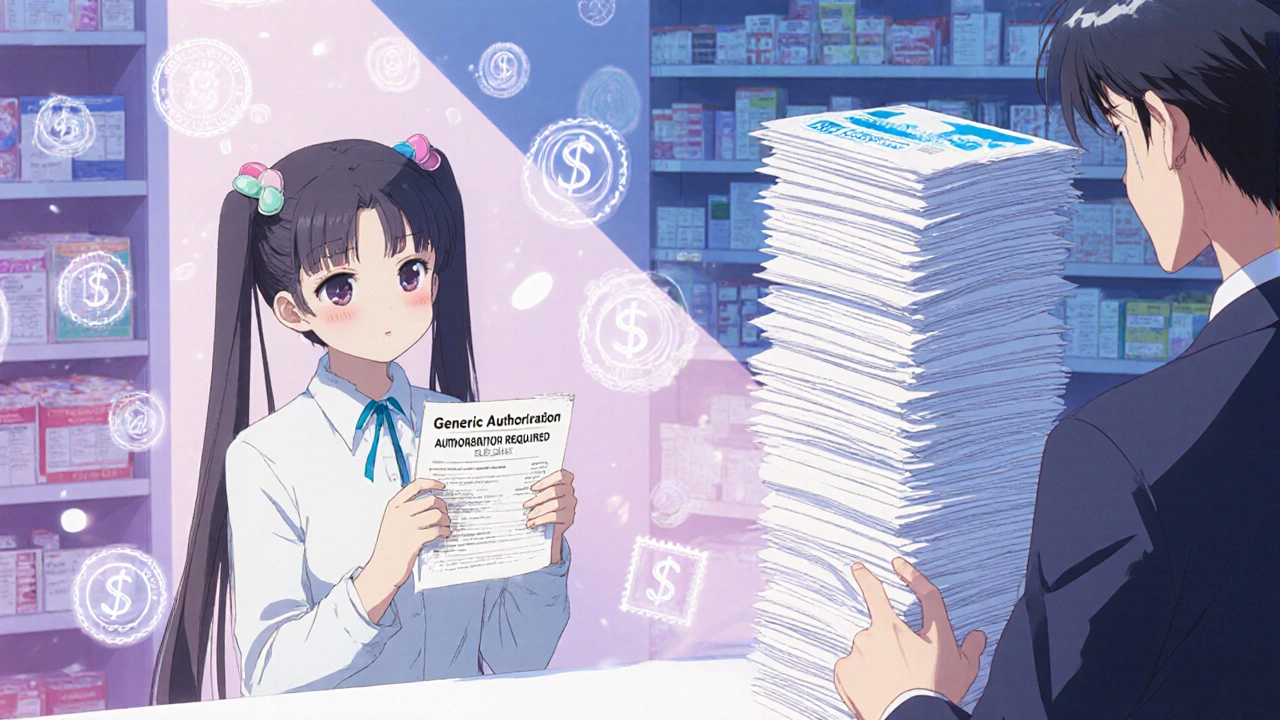Despite being cheaper and widely used, many generic medications now require insurance approval before being covered. Learn why this is happening, which drugs are affected, and how to fight back.
Read MorePharmacy Benefits: What You Really Get from Your Drug Coverage
When you hear pharmacy benefits, the set of rules and coverage your health plan provides for prescription drugs. Also known as drug coverage, it determines what meds you can get, how much you pay, and whether your insurer will even let you switch to a cheaper version. Most people think pharmacy benefits just mean "your pills are covered." But the real story is messier. Your plan might cover a drug, but force you to try three cheaper ones first. Or it might block your usual medicine because it’s not on their list—no warning, no explanation.
That’s where generic substitution, when your pharmacy swaps your brand-name drug for a chemically identical generic version. Also known as pharmacy substitution, it’s legal, common, and often saves you money—but not always safe. Some people switch to generics without a second thought. Others panic when their prescription changes. The truth? It works fine for most, but not for everyone. If you’re on thyroid meds, seizure drugs, or blood thinners, even tiny differences in fillers or absorption can throw off your whole treatment. Your pharmacist should flag this—but they often don’t.
Then there’s the cost. medication costs, what you actually pay out of pocket after insurance discounts and copays. Also known as drug pricing, it’s not just about the sticker price. Two people with the same insurance can pay wildly different amounts for the same pill. Why? One got a 30-day supply. The other got a 90-day mail-order version. One’s plan has a deductible. The other’s doesn’t. One’s drug is tier 2. The other’s is tier 4. Pharmacy benefits aren’t one-size-fits-all. They’re a maze of tiers, copays, prior authorizations, and step therapy rules that change with every insurer.
You might think your insurance is helping. But sometimes, it’s the reason you skip doses or split pills. If your plan forces you to try a cheaper drug that doesn’t work, you’re stuck paying for something that doesn’t help. If your brand-name drug gets pulled from the formulary, you either pay full price or go without. And if you’re on multiple meds? The risk of bad interactions goes up—especially when you’re switching drugs without clear guidance.
That’s why knowing your pharmacy benefits isn’t optional. It’s how you avoid being stuck with the wrong pill, the wrong price, or the wrong side effect. You need to know when to push back, when to ask for an exception, and when to ask your doctor for alternatives that your plan actually covers. The posts below show you exactly how to do that—whether you’re fighting a generic switch, comparing inhalers, managing drug interactions, or trying to cut your medication load safely. No fluff. Just what works.
